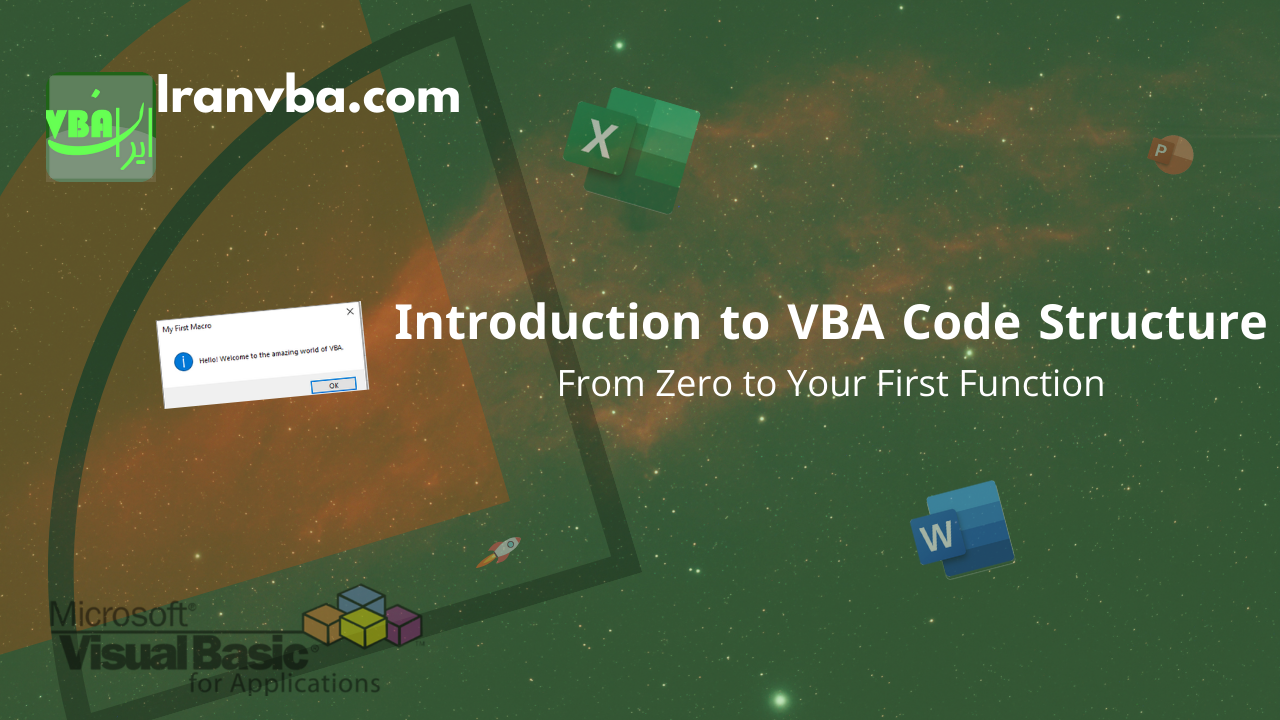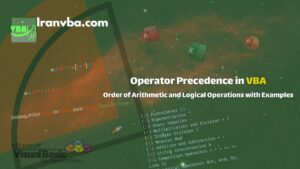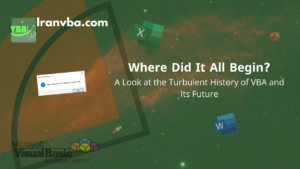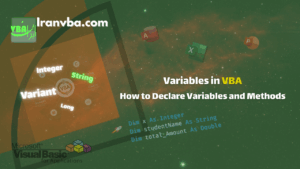VBA is a powerful programming language for automating operations in Microsoft software like Excel, Word, and Access. Like any other programming language, VBA consists of specific commands and rules. In this tutorial, by providing a simple code sample, we will familiarize ourselves with the basic structure and syntax of VBA.
Note: The goal of this post is not to teach complete coding, but rather to provide an initial introduction to the VBA code environment and the VBE editor.
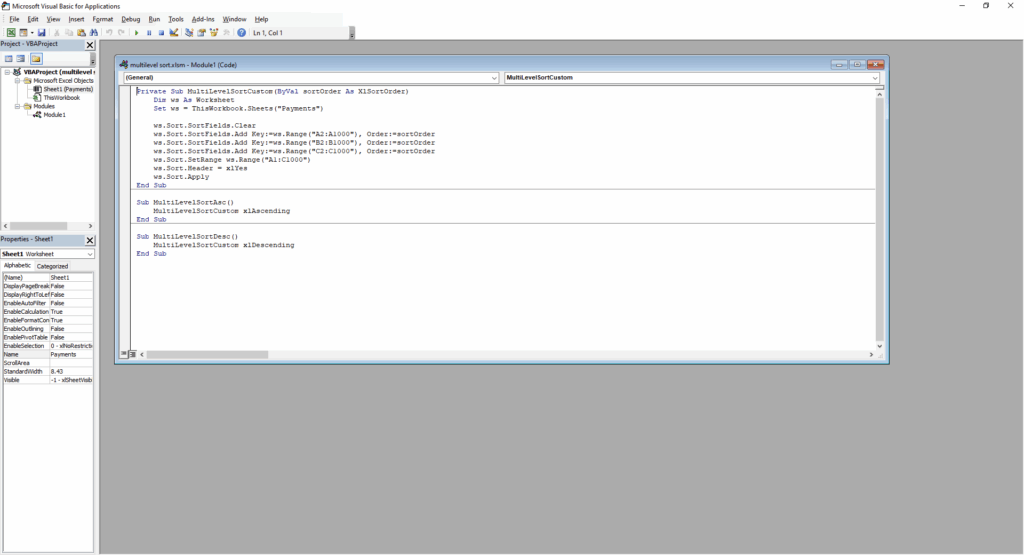
Option Explicit
'Function to convert Gregorian month numbers to their names
Public Function numericMonth_to_name(bytMonth As Byte) As String
Select Case bytMonth
Case 1
numericMonth_to_name = "January"
Case 2
numericMonth_to_name = "February"
'... (rest of the months)
Case 12
numericMonth_to_name = "December"
End Select
End FunctionAs you can see, the code above takes a month number and returns its Persian name. Now, let’s analyze this code.
📑 Table of Contents
Analyzing the Structure of VBA Code
- Keywords: Blue words like
Public,Function,Select Case, andEndare VBA keywords that have specific meanings for the compiler. The VBE editor automatically colors them to help reduce typos. - Comments: Lines starting with an apostrophe (‘) are comments that are ignored by the compiler. These lines are crucial for code readability and documentation.
- Line Endings: Unlike languages like JavaScript or C# that use a semicolon (;) at the end of each statement, in VBA, a line ends by pressing the Enter key. To break a long statement into multiple lines, the underscore character (_) is used.
- Whitespace: Empty lines and indentation are ignored by the compiler. Using them correctly greatly enhances code readability and aesthetics.
Now it’s your turn!
Is this your first time encountering VBA code? What questions do you have about its structure? Please share your thoughts and questions in the comments section below.
Read More
Conditional and Logical Statements in VBA | Program Flow Control and Interactive Practice
Your First VBA Programme | Put Your Knowledge into Practice
Immediate Window | Understanding the VBA Immediate Window
VBA Built-in Functions | Complete List of Functions in Visual Basic
VBA Procedures | Definition, Types & Usage in Visual Basic
Constants in VBA | Types, Scope, and How to Use Them Effectively
Variable Scope in VBA | How to Access Variables across Different Parts of a Project
